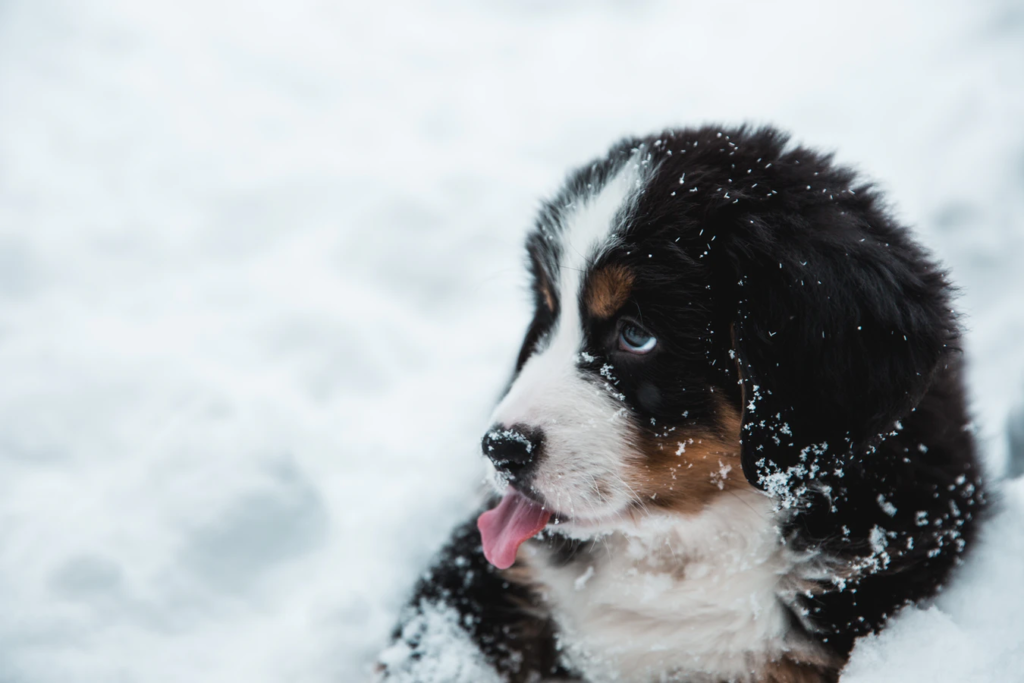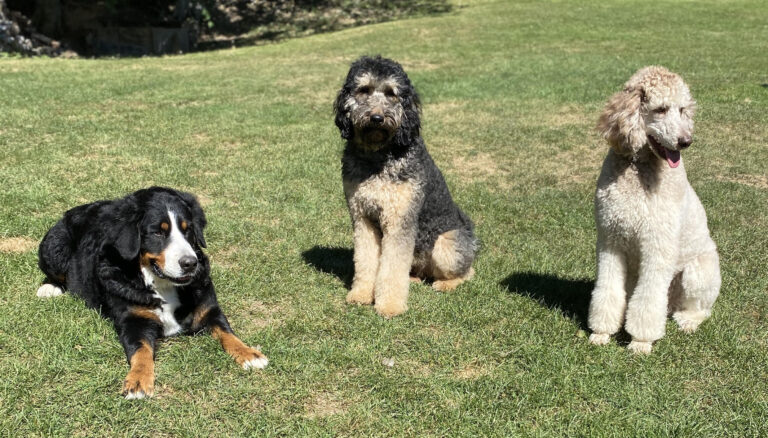Are you looking to add a new furry family member to your pack? We may be biased, but we think a Bernedoodle dog is a great choice! This breed, which is a cross between a Bernese mountain dog and a poodle, is the perfect family dog. Bernedoodles are known for being smart, loyal, and goofy! This breed is also great if any of your family members have allergies, as they are low- to non-shedding.
At Oodles of Doodles, we breed adorable F1, F2, and F1B generation Bernedoodles that are sure to be the perfect addition to your family. Before buying, you’ll want to understand the difference between each generation.
We’re here to break down all of these seemingly cryptic phrases so that you can make the best choice for your family’s needs! Keep reading to learn the difference between F1 vs. F1B Bernedoodles.
Understanding Generations Terminology

When figuring out which type of Bernedoodle is best, it’s an absolute must to understand the generational terminology. The good news is that the terminology is relatively straightforward, once you understand what the letters and numbers mean.
Let’s break it down into layman’s terms and look at what an F1B Bernedoodle is.
The F in this term stands for filial hybrid. This means that the Bernedoodle has two purebred parents. So, either mom is a full Poodle and dad is a full Bernese Mountain Dog, or vice versa.
The 1 is the generation of the Bernedoodle. So, an F1B dog is the first generation of offspring from the two purebred parents.
The B stands for backcross. In basic terms, this means inbreeding back to a 100% Poodle. Breeders generally breed back to a 100% Poodle because they don’t shed, which makes them an allergy-friendly furry family member.
F1 Bernedoodles
An F1 Bernedoodle is the first generation Bernedoodle, and it is typically what people think of when they hear or envision this breed. This dog is 50% Poodle and 50% Bernese Mountain Dog, which means one parent is 100% Poodle and the other is 100% Bernese Mountain Dog.
While most Bernedoodles have the hair texture and type of a Poodle with Bernese Mountain Dog coloring, this isn’t true for all F1s. Some are black and white with some brown, while others are entirely black. Genetics can (and do!) vary, which will influence how each puppy looks. For example, some F1 Bernedoodles have flat, straight coats while others have more wavy or curly coats.
A wavy or curly coat indicates that the dog has more Poodle genetics and will be non-shedding and hypo-allergenic. Float or straight coat F1s have a little less Poodle and more Bernese Mountain Dog.
One of the best genetic advantages of choosing an F1 Bernedoodle is what’s known as hybrid vigor. This term means that any dog that is the first cross between two purebred dogs is more likely to be healthier than either of the parent purebred dogs. This is because the offspring doesn’t inherit genetic deficiencies that may be passed down from the parents.
So, what can you expect from a F1 Bernedoodle?
- A straight, wavy, or curly coat
- Varying hypo-allergenic qualities
- Varying shedding qualities, but generally low- to non-shedding
- Hybrid vigor
F1B Bernedoodles
An F1B Bernedoodle is 75% Poodle and 25% Bernese Mountain Dog. This is a cross between an F1 Bernedoodle and either a purebred Poodle or a purebred Bernese Mountain Dog. An F1B Bernedoodle is usually bred with a 100% Poodle to create offspring with a non-shedding coat, along with hypo-allergenic properties.
Because this generation is a mix between an F1 Bernedoodle and a Poodle, it’s known as a backcross, which is why it’s called a F1B.
Compared to other generations, F1B Bernedoodles are usually the most hypo-allergenic. This is because they inherit a larger quantity of Poodle attributes, so an F1B Bernedoodle is most likely to have a curly coat. If you or someone in your family has pet allergies, an F1B generation dog is most ideal.
However, because of their curly coat, F1Bs require routine grooming to avoid tangles and mats in their fur. Some owners choose to keep the hair short to avoid these issues.
F1B Bernedoodles also get some of the benefits of hybrid vigor. Because F1B dogs are 2nd-generation Bernedoodles, they lose some of the hybrid vigor attributes, but not much. This increases the chance of having a healthy dog for years and years to come.
What can you expect from a F1B Bernedoodle?
- Wavy or curly coat
- Commonly hypo-allergenic
- Commonly non-shedding
- Hybrid vigor, but less than F1 generations
F2 Bernedoodles
A F2 Bernedoodle is 50% Poodle and 50% Bernese Mountain Dog and is second generation. This means the F2 is a cross between two F1 Bernedoodles. The biggest drawback of an F2 Bernedoodle is that the resulting offspring can be very unpredictable, especially considering the type of coat and the variation of shedding.
This means that if you’re looking for a truly non-shedding dog or one that is hypo-allergenic, you don’t want to get an F2 Bernedoodle.
What can you expect from a F2 Bernedoodle?
- Highly unpredictable; could be straight, wavy, or curly
- Hypo-allergenic properties are uncertain
- Non-shedding properties are uncertain
- Some hybrid vigor, but less than F1 generation
What Generation Bernedoodle Is Best?

There’s no right or wrong Bernedoodle. The best generation really depends on your family’s wants and needs. If you’re looking for a non-shedding, hypo-allergenic dog that has some hybrid vigor qualities, you’ll want to choose a F1 or F1B Bernedoodle.
On the other hand, if shedding and hypo-allergenic properties aren’t a deciding factor, then you can choose a generation that has the coat type that you prefer. For less grooming and brushing, choose a flat coat. Otherwise, if you don’t mind routine grooming, choose a wavy or curly coat.
At Oodles of Doodles, we breed F1, F1B, and F2 Bernedoodles. We have been breeding this amazing dog for years, mostly due to their lovable, smart, and good-natured personalities. This breed has also become a favorite due to minimal to no shedding!
If you want to expand your family with a furry canine, we have just the puppy for you! Each of our puppies comes with a health certificate, a pupper starter kit, toys, and even a blanket with familiar scents!
Your new fur baby is waiting. Oodles of Doodles is expecting a litter in summer 2021! Contact us today to learn more.
Sources: